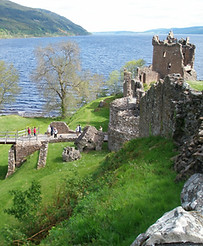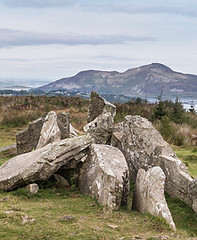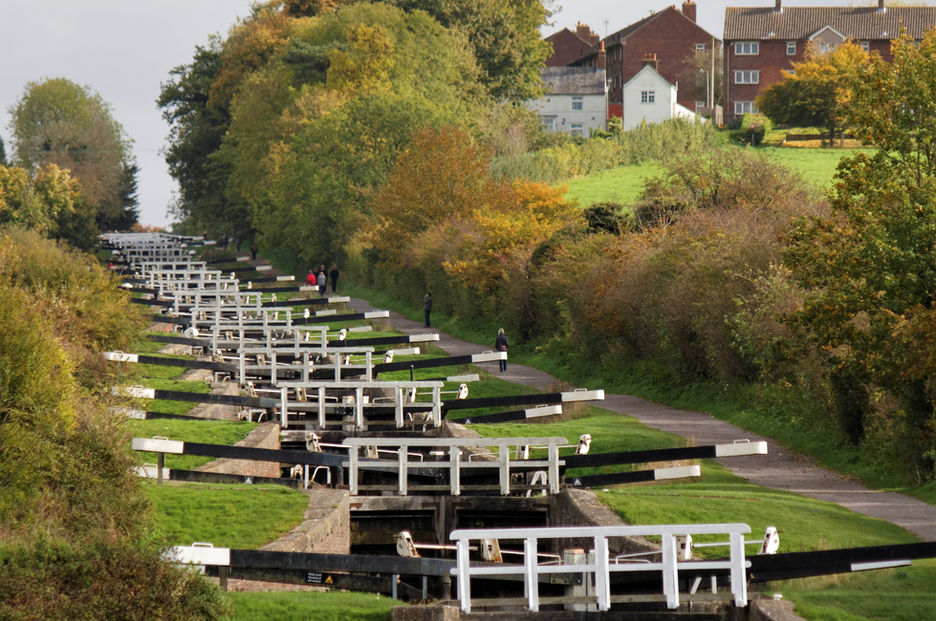
UNITED KINGDOM (UK)
The British Isles have been inhabited since prehistoric times. Evidence has been found from The Palaeolithic and Mesolithic (10,000 to 4,500 BC) periods, also known as the Old and Middle Stone Ages. Join us on a journey from then, through to Neolithic and Bronze Ages (4500 to 600 BC), Iron Age (1200 BC to 600 AD), Classical Period (when the Romans invaded), Medieval period to today!
Great Britain, or Roman Britannia, became the target of great general Julius Caeser, before he was rudely interrupted by political turmoil back in Rome, leading, ultimately to his brutal assassination on the Ides of March in 44 BC. Emperor Claudius returned 100 years later to complete what Caesar had started.
TARAS' TIPS:
“Follow in the footsteps of Julius Caesar, from his first arrival off the coast of Dover, where he first encountered the Britons. Recent excavations have located the precise landing point of Caesar’s ‘invasion’ forces; the University of Leicester has conducted these excavation. Visit the site near Ramsgate guided by me and Clio to find out more! ”
Begin your trip by sailing along the coast of Dover, just as Caesar did, until you reach Ramsgate and Pegwell's Bay, where he landed. Then travel onwards to the mouth of the River Thames, visiting Richborough, Canterbury, Rochester, and then Colchester en route.
Following the path of the Roman development throughout the British Isles, leading you to London, the South West and beyond.

Stonehenge
THE UNITED KINGDOM
ArchaeoMuse is proud to be an official Tour Operator for the Great West Way®!
We have launched our anticipated and dedicated Great West Way page (click here), full of exciting and compelling experiences!
Feature Trips for 2024
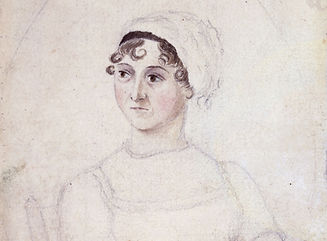%20-%20one%20or.jpg)
History, Literary, and Culture.
May/June/July/August
Based in Wiltshire, Bath, and Dorchester, enjoy 9 days of exploration of the poetry and prose of Thomas Hardy and Jane Austen, two writers with strong connections to the Great West Way.
Visit the places mentioned in their works as well as the places that inspired them. Sample works:
-
Austen’s Northanger Abbey and Bath
-
Hardy’s Jude the Obscure
-
Hardy’s poetry
We will also visit museums, archaeological sites, and galleries.
8 Nights From:
Including breakfasts, 4 dinners, educational materials, guides, coordinator for all transport, transfers, and accommodation.
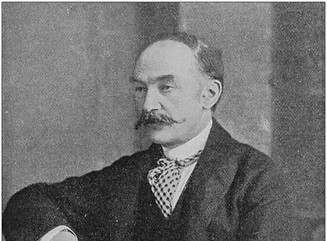
Thomas Hardy Experience
May to October
Based in Dorset and Wiltshire, with an optional extension to Bath.
Join ArchaeoMuse Academy and Wessex Museums on this fascinating and immersive experience discovering how archaeological sites influenced Hardy’s writings. We will visit “the largest collection of Thomas Hardy objects ever displayed at one time. Take a fresh look at the life and literature of the Victorian novelist and poet, Thomas Hardy, in the stunning Wessex landscapes that shaped his view of the world. His story will be retold in exciting new ways by our museum collections...”
Together we will explore his memorabilia including personal letters, art and more. See how his love for ancient archaeological sites see into his work.
3/4 Nights From:
Including breakfasts, 4 dinners, educational materials, guides, coordinator for all transport, transfers, and accommodation.

The ancient origins of modern Britain.
May/June/July/Aug
Join Clio (Muse of History), Calliope (Muse of Literature and Architecture), and your knowledgeable guide, for 6 nights, on the fascinating path from Ancient Bronze Age Britons, Iron Age Celts, Romans, Medieval Anglo-Saxons, and Normans to Modern Great Britain.
This fascinating adventure is based around Stonehenge and the surrounding countryside! This is the best way to understand the rich and provocative context of this important monument. Thalia, Muse of leisure and entertainment, will suggest traditional great pubs where you can have a break and enjoy a taste of Britain. Also, some wonderful, insightful, and awe-inspiring museums.
6 Nights From:
Including breakfasts, 3 dinners, educational materials, guides, coordinator for all transport, transfers, and accommodation.
SCROLL THROUGH SOME OF OUR MUSES' SUGGESTIONS

ENGLAND
England is famous for its long history, and afternoon tea! Also, its Royal Family and the stunning Windsor Castle, the oldest royal residence still in use.
Did you know that England was settled by humans for at least 500,000 years? Or that Amesbury in Wiltshire has been confirmed as the oldest UK settlement, including Stonehenge. Wiltshire has been continually occupied since 8820BC,
Explore Winchester, the first capital of England, from 827 to 1066., or visit the first capital of Roman Britain, Colchester.
Marvel at picturesque and quintessentially English villages and explore England's Medieval past.
.png)
WALES
Welsh people tend to love the outdoors, obvious why, a love that runs deep. Listen to their passionate national anthem, a sort of love song, for the ancient mountains, deep valleys, rushing rivers, and sea.
The land of poetry and traditions gives a sense of identity that is born from the ancient soil beneath their feet. Learn about their Celtic heritage and more!
Discover Wales' brutal invasions, majestic castles, and incredible landscapes. Immerse yourself in the many myths and legends!
One thing is for certain, the story of Wales is a captivating one!

SCOTLAND
The recorded history of Scotland begins in the 1st century AD when the Romans invaded Britain. Scotland has been invaded and settled many times contributing to Scotland's wonderful culture and society.
Discover the fascinating history of people in Scotland including Roman soldiers, Vikings, noble, powerful ruling monarchs, and even enlightened philosophers.
Go back in time to 10,000 BC known as the Palaeolithic era ( Stone Age). Follow in Roman or Viking footsteps, immerse yourself in Shakespeare’s Macbeth, and discover many Scottish myths and legends!
SCROLL THROUGH SOME SAMPLE ITINERARIES

Beautiful Britain
More than Fish 'n' Chips, Afternoon tea, and Sheep!
We can tailor-make your travel experiences for you and your desires. We provide experiences for individuals, groups, families, friends, academics, and history buffs (beginners or experts).
We proudly collaborate with historians, archaeologists, locals, experts, and academics to ensure that your needs are met.
“I cannot praise ArchaeoMuse enough. Lucy and Antonio worked tirelessly to tailor-make our Y7 trip to the Bay of Naples; such a wonderful experience for pupils and staff.”
— Lois, Teacher —


.png)


.jpg)







.png)

.jpg)









